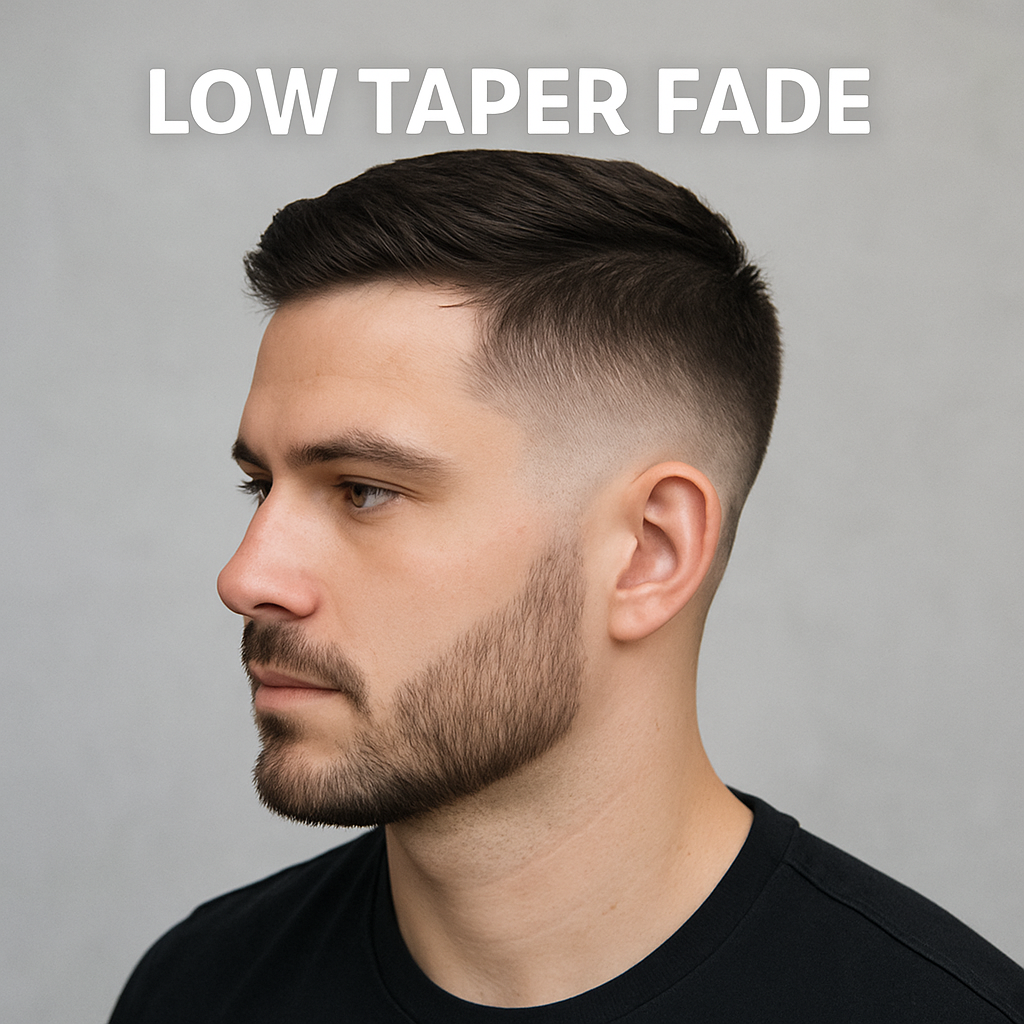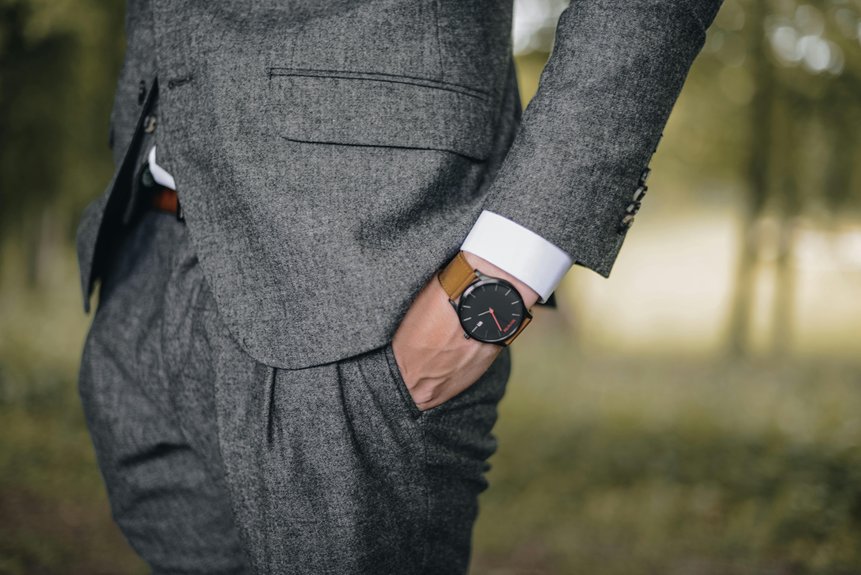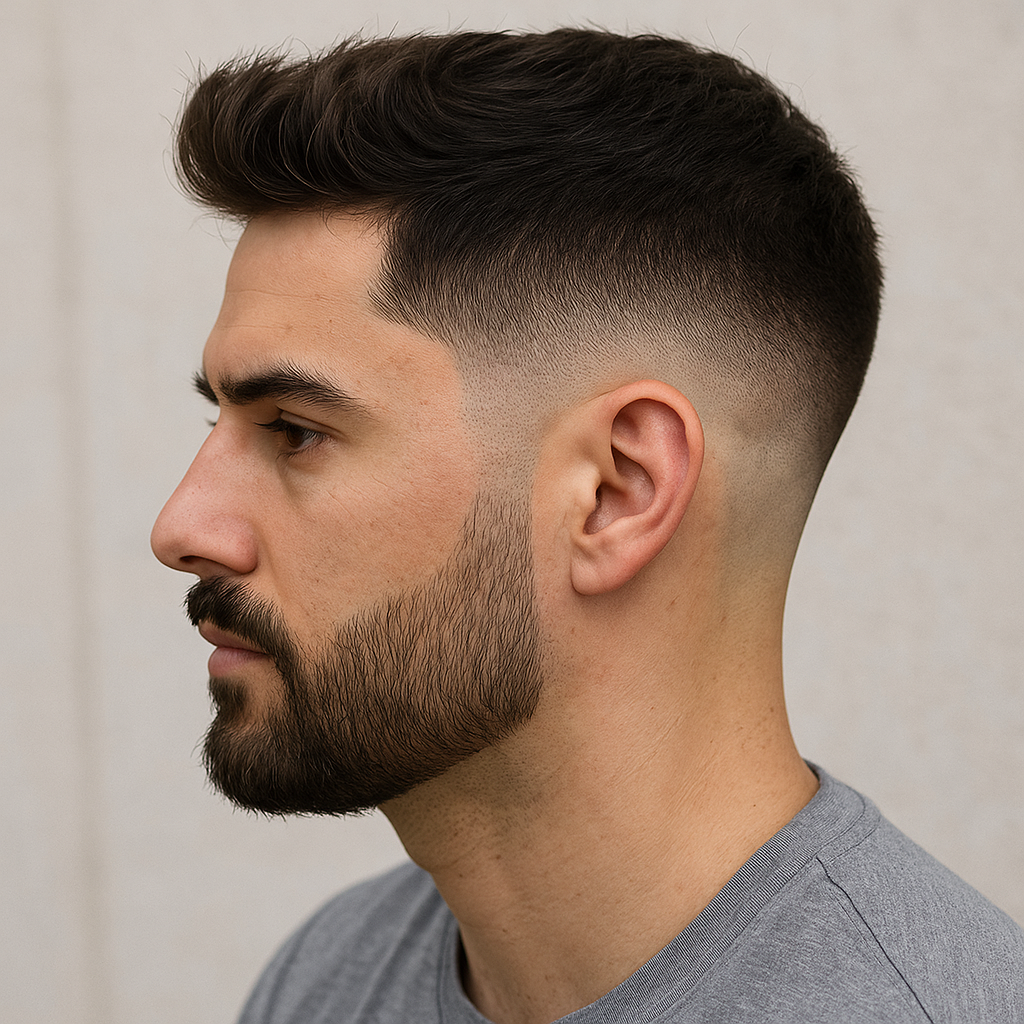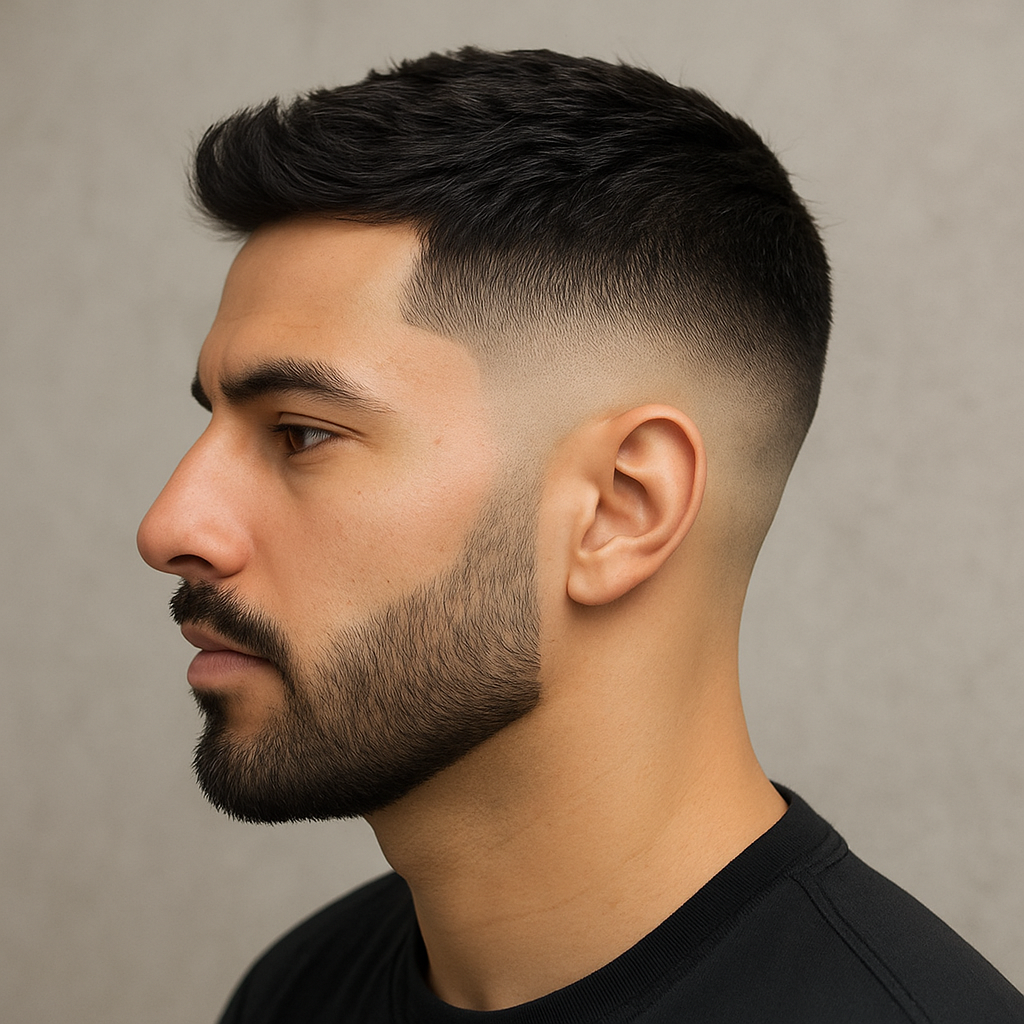Introduction to the Low Taper Fade
If there’s one hairstyle that’s managed to stay timeless while still looking fresh and modern, it’s the low taper fade. From athletes to musicians to everyday guys who just want to look sharp, this haircut has become a universal favorite. But what makes it so special?
Well, think of it like the perfect middle ground: it’s not too flashy, not too boring. It’s clean, stylish, and versatile. Whether you’re heading to the office or out on a night with friends, the low taper fade works effortlessly.
What is a Low Taper Fade?
At its core, a low taper fade is a haircut where the hair gradually shortens as it moves down the sides and back, starting very low near the ears. The fade is subtle, blending the shorter hair into your natural hairline for a clean finish. Unlike a high fade, which climbs up the head, the low taper keeps things understated and neat.
Why This Style is So Popular?
Simple: versatility and class. It looks good on almost anyone, works with most hairstyles, and requires minimal styling. Plus, it’s one of those cuts that can look professional at work but also stylish and trendy outside the office.
The Basics of the Taper Fade Haircut
Before we go deeper, let’s clear up some confusion. Many people mix up tapers and fades, but there’s a difference worth knowing.
Difference Between a Taper and a Fade
- Taper: Hair gradually shortens toward the neckline and ears but doesn’t go too extreme.
- Fade: A more dramatic version where the hair blends down to very short lengths, often to the skin.
The low taper fade combines both worlds—giving you a taper’s neatness with the fade’s sharp blending.
Low vs Mid vs High Taper Fade
- Low Taper Fade: Starts just above the ear and is the most subtle.
- Mid Taper Fade: Begins around the middle of the head, giving a bolder look.
- High Taper Fade: Starts high near the temples, creating a sharper contrast.
The low taper is the go-to for anyone who wants a polished look without being too loud.
Key Features of the Low Taper Fade
Clean and Subtle Look
It’s neat without being over the top. If you like understated style, this is it.
Versatility for Any Hair Type
Curly, wavy, straight—it doesn’t matter. The low taper fade adapts to your natural texture.
Works with Beards and Mustaches
Got facial hair? Perfect. The low taper fade transitions smoothly into beards, making everything look connected and balanced.
Popular Low Taper Fade Styles
This haircut is like a blank canvas—you can pair it with almost anything on top. Let’s explore a few winning combinations.
Low Taper Fade with Curly Hair
A favorite among men with curls. The fade keeps the sides neat while letting the curls shine on top.
Low Taper Fade with Straight Hair
Straight hair looks sleek with a low taper fade, especially if you style it with a side part or slick back.
Low Taper Fade with Wavy Hair
Waves and low taper fades are like peanut butter and jelly—they just work. The fade frames the waves perfectly.
Low Taper Fade with Long Top
Keep some length on top for versatility. You can slick it back, do a pompadour, or even a man bun.
Low Taper Fade with Short Top
Want low maintenance? Pair it with a short top for a clean, military-inspired vibe.
Low Taper Fade with Beard
Probably one of the best combos out there. The fade blends into the beard seamlessly, giving a masculine, sharp finish.
Styling the Low Taper Fade
Best Hair Products for the Look
- Pomade or Wax: For slicked-back or combed styles.
- Sea Salt Spray: To add texture to wavy or curly hair.
- Matte Clay: For a natural, no-shine finish.
Tools You’ll Need at Home
- A quality trimmer or clipper.
- A comb and small round brush.
- A blow dryer for volume.
Daily Maintenance Tips
- Wash and condition regularly.
- Use a little product—less is more.
- Visit your barber every 2–3 weeks to keep the fade sharp.
Who Should Get a Low Taper Fade?
Face Shapes That Suit This Cut
- Oval: Works with pretty much any hairstyle, so the low taper fade looks perfect.
- Square: The fade highlights the strong jawline.
- Round: Adds definition and makes the face appear longer.
Lifestyle and Personality Fit
This cut is great for guys who want something professional yet stylish. If you like looking sharp without spending an hour on your hair, this is for you.
How to Ask Your Barber for a Low Taper Fade
Using the Right Terminology
Say “low taper fade,” not just “fade.” Barbers need the exact term.
Bringing Photo References
Pictures help a ton. Everyone’s idea of a fade can be different.
Communicating Your Desired Length
Be clear about how long you want the top and how short the sides should be.
DIY Low Taper Fade at Home
Step-by-Step Guide
- Start with clean, dry hair.
- Use clippers with a guard to trim the sides.
- Gradually switch to shorter guards as you move lower.
- Blend carefully to avoid harsh lines.
- Clean up the neckline and around the ears.
Common Mistakes to Avoid
- Going too high with the fade.
- Leaving harsh lines.
- Rushing the process.
Celebrities Rocking the Low Taper Fade
Athletes with Low Taper Fade
Basketball and football players often sport this cut for its clean look during games.
Musicians and Actors with This Style
From Drake to Michael B. Jordan, plenty of celebs show just how versatile the low taper fade really is.
Advantages of the Low Taper Fade
Timeless Appeal
It’s been around for decades and still looks trendy today.
Low Maintenance
Unlike more extreme styles, it doesn’t take hours to style.
Professional Yet Stylish
Works in the office and on the weekend—no need to compromise.
Disadvantages of the Low Taper Fade
Requires Regular Trims
To keep it looking sharp, you’ll need touch-ups every couple of weeks.
Might Not Suit All Hairlines
If your hairline is uneven, the fade might make it more noticeable.
Low Taper Fade vs Other Hairstyles
Compared to the High Fade
High fades are bolder, while low fades are subtle.
Compared to the Skin Fade
Skin fades go all the way down to bare skin. The low taper fade doesn’t have to be that extreme.
Compared to the Undercut
The undercut leaves a stark contrast, while the taper fade blends smoothly.
Cost of Getting a Low Taper Fade
Barber Shop Prices
Expect anywhere from $20 to $50 depending on your location and barber’s expertise.
DIY Cost Breakdown
Investing in clippers ($40–$100) pays off in the long run if you’re confident enough to cut your own hair.
Final Tips to Maintain the Low Taper Fade
- Stick to a trimming schedule.
- Use the right hair products for your hair type.
- Don’t be afraid to try different styles on top.
Conclusion
The low taper fade is more than just a haircut—it’s a statement of style, class, and versatility. Whether you’re rocking it with curls, waves, or a slicked-back top, this cut adapts to you. It’s professional enough for the office but cool enough for casual hangouts. If you want a timeless yet modern haircut that suits almost anyone, the low taper fade is hard to beat.
FAQs About Low Taper Fade
How often should I get a low taper fade trimmed?
Every 2–3 weeks is ideal to keep the fade looking fresh.
Can I combine a low taper fade with a different hairstyle?
Absolutely! It pairs well with pompadours, quiffs, slick backs, and even man buns.
Does a low taper fade work with curly or coily hair?
Yes, in fact, it looks amazing because it keeps the curls neat and defined.
What’s the difference between a low taper fade and a drop fade?
A drop fade curves around the ear and dips lower at the back, while a low taper fade stays more even.
Is a low taper fade professional enough for work?
Definitely. It’s clean, subtle, and polished—perfect for both professional and casual settings.




